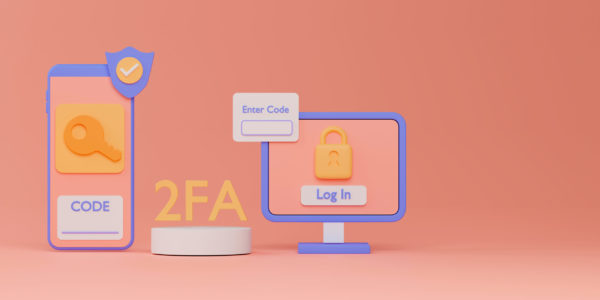You’ve probably already encountered two-factor authentication (2FA) if you use the Internet to access any account. This security method is growing in popularity to better protect a person’s information and the things they can access.
If you’ve been wondering what 2FA is, how it works, and how to activate it for your device, look no further. Here’s all you need to know about 2FA.
What is two-factor authentication?
Two-factor authentication, also known as 2FA, two-step verification, or dual-factor authentication, is a security measure in which online users provide two different ways to verify themselves.
2FA better protects a user’s identity and information as well as the resources he or she is trying to access. For example, an online email account might ask the user for a password and their birthday when they login to verify it’s really them.
2FA gives added security compared to other authentication methods that rely on only one layer of verification – typically just a password.
It’s not new, though. 2FA has long been used to regulate access to sensitive areas, systems, and data. It’s gaining popularity among online service providers who are concerned about their user’s information falling into the hands of hackers and other bad actors.
What makes two-factor authentication unique?
Online security is a touchy subject. Websites get hacked (and leak millions of user accounts’ data), people become victims of email phishing scams, the list goes on. 2FA aims to stop data breaches by providing an extra, personal layer of security. it requires two different forms of identification before users can gain access.
“Two forms” refers to two different types of info. For example, one form could be memory-based like a password while the next could be something you have like a fingerprint, eyeball, or if those are too sci-fi, a unique passcode, designed to be valid for a limited time and sent to your cell phone.
2FA is not confined to the Internet though; you can find it offline as well. For example, when withdrawing money from an ATM, it requires both your ATM card (something you have) and a PIN (something you know). Gas stations also use it to make sure someone else isn’t literally fueling their lifestyle with your card. You usually need both your card and a PIN or zip code to unlock the pump.
The benefits of 2FA

With news of a data breach every other week, 2FA is a very viable solution to protecting data. Here are some reasons it’s used:
- Millions of email addresses and passwords are compromised every year and put up for sale on the dark web.
- People reuse passwords across devices, websites, and accounts, increasing the potential for a data breach.
- Hackers are becoming increasingly clever, using simple tricks like plugging in known email addresses and passwords into dozens of sites.
- Many passwords are so weak, they could be accurately guessed.
- Knowledge-based authentication that relies on security questions can be overcome by scanning a social media profile or via social engineering if a bad actor is determined enough.
How does 2FA work?

2FA is really not complicated. Here’s how it works:
- An app or website asks you to log in.
- The login requires something you know – username and password, most likely or a pin.
- A second login kicks in wherein you have to prove your identity using something only you would have: a telephone number; a biometric like a fingerprint; an ID card, a security token, a location factor, or a time factor.
It really takes keeping you safe to the next level.
How to set up two-factor authentication for your device
The exact details of setting up 2FA will vary from one device to another. However, it generally involves heading over to “settings,” selecting “security,” and then choosing “two-step verification” from the menu that pops up. A unique code will then be sent to you through a channel of your choosing (usually email or SMS).
Leave a comment and share
2FA is one of the safest security protocols available right now. What strikes you the most about it? Leave a comment and share this article with your friends.